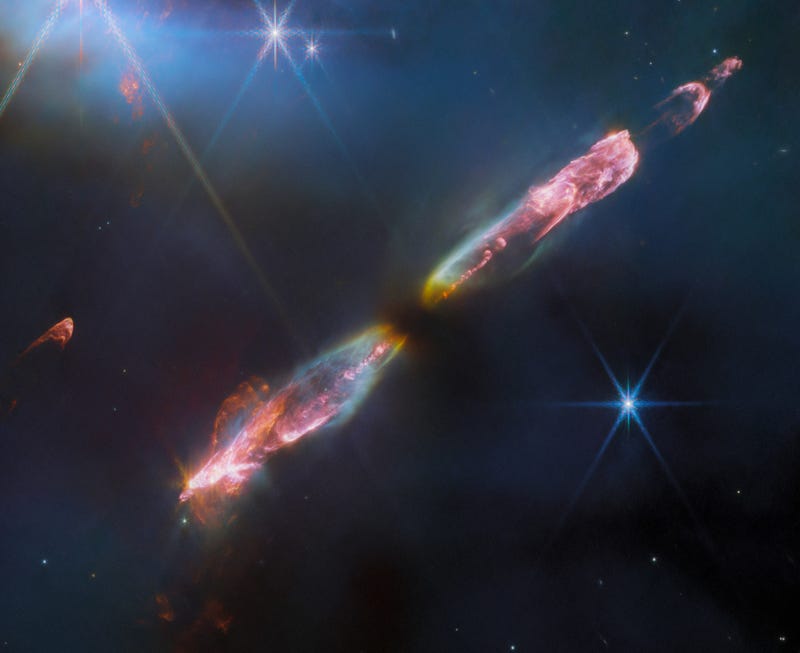
A recently released photo of an infant sun has given astronomers a look at what our own solar system’s ball of fire would have looked like when it was still learning to potty train.
NASA’s James Webb Space Telescope captured the photo of a sun that was only a few tens of thousands of years old.
The star, Herbig-Haro 211, was released last week, and astronomers have called it “an infantile analogue of our Sun,” according to a NASA press release.
HH211 is located approximately 1,000 light-years from Earth in the Perseus constellation and has about 8% of the Sun’s mass.
The star is classified as a Class 0 protostar, which means it is less than 100,000 years old and “eventually will grow into a star like the Sun,” according to the Webb Space Telescope website.
Newborn stars are very difficult to document, as NASA shared that they are “invariably still embedded within the gas from the molecular cloud in which they formed.”
However, the photo was captured thanks to Webb’s sensitive infrared instruments that allowed it to spot the star.
“The infrared emission of the star’s outflows penetrates the obscuring gas and dust, making a Herbig-Haro object like HH 211 ideal for observation with Webb’s sensitive infrared instruments,” NASA said in the press release.
